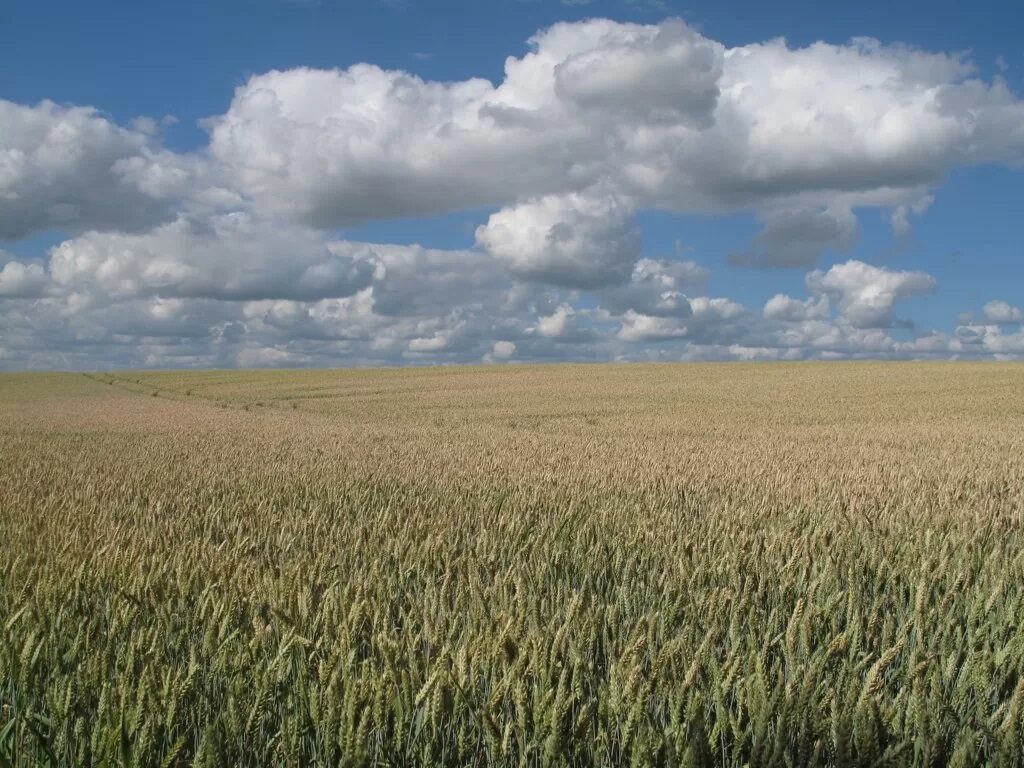Future Food Depends On The Cutting Edge
Oct 31, 2022 | Pratirodh Bureau
Wheat, grown in vast fields, cannot easily be protected by glasshouses (Photo: Dag Endresen CC 2.0)
This week, Australians across three states are mopping up after widespread flooding inundated vast areas. Prime Minister Anthony Albanese has warned the impact might yet be felt by those farther afield: food prices, already suffering a series of shocks this year, are likely to climb.
“There’s no doubt …the impact will feed into higher prices, most unfortunately at a time when inflation has already been rising,” he said.
Climate change is causing temperature and rainfall conditions to become increasingly extreme, and this poses a significant threat to crop productivity and to all life as we know it.
Droughts have increased by nearly a third in a generation and floods have increased four-fold since the 2000s. In just the last few months, flooding has hit the USA, Italy, Nigeria, Bangladesh and Pakistan. Increasingly hazardous storm events are occurring and this is predicted to worsen in the future. A two-degree increase in temperature has been associated with an 11 percent reduction in global wheat yield.
Humans have been selectively breeding crop plants to improve productivity for around 10,000 years. This enabled creation of crops that produce greater yields, more nutritious and better-quality foods relative to wild ancestral plants. The selection of desirable plant characteristics that led to these types of improvements happened at a time when the climate was relatively moderate and stable compared to the conditions likely to be experienced in agricultural areas in the future.
The current generation and many generations to come will face the extraordinary challenge of having to work out how to adapt food production systems to extreme climatic conditions, such as increasingly frequent and severe heatwaves, droughts, floods and storms.
Science and innovation can contribute to buffering food systems from catastrophic losses. Protected agriculture, where crops are grown inside giant glasshouses, is one strategy to protect food production from extreme weather. But investment in these large and expensive systems is not always possible, and extreme storm events can destroy glasshouse facilities. Growing broadacre crop plants such as wheat and sorghum in protected systems would require extraordinarily large and prohibitively expensive facilities. Crop plants grown in the field will need to adapt to future climates.
Some plants have evolved to withstand harsh conditions like hot dry deserts, salty oceans and frozen environments. Plants that can withstand extreme conditions or weather events contain genetic and physiological information that point to how plants could be designed and tailor engineered to better withstand extreme weather events. Across the globe, there are plant science research teams working on finding and describing how plant genetics and physiology influence environmental stress tolerance. Editing of crop genomes can enable target genes to be optimised to adapt crops to challenging environments.
Developing food crops that are resilient and productive in the face of extreme weather and assessing the social licence to test them requires expertise. People with these types of skills will be needed. Examples of cutting-edge tools and techniques include: genome engineering and gene-editing using CRISPR/Cas9; optimising creation of new plants using cutting-edge regeneration techniques or nanoparticles and using spray-on RNA to influence field-crop adaptation to stress.
The next generation of crop biotechnologists require access to training that will enable them to develop more climate-resilient crops. Biotechnologists will need to assess how to adapt existing crops for future climates, and how to build new crops designed for the climatic conditions of the future. Demand for skilled biotechnologists is growing as biotechnology job growth outpaces other sectors. Simple life forms have been built synthetically revealing that in the future it may be possible to design and create more complex organisms, like plants.
Plants are a critical resource. Ultimately, all life forms rely on plants as a source of food, water, medicine, air quality, habitat and for their positive influence on Earth’s environment.
A modern understanding of the botanical world and working with the best available technology to improve it, in the same manner as humans for generations past, will be essential if we are to ensure humans’ welfare on this planet.
(Originally published under Creative Commons by 360info™)
